Eyelash Begonia, scientifically known as Begonia Bowerae, is a unique and captivating plant that has gained popularity among plant enthusiasts for its distinctive features. This begonia species is native to the Hengchun Peninsula in Taiwan and is commonly referred to as the “Eyelash Begonia” due to the fine, hair-like fringes that adorn its large, asymmetrical leaves.
Key Characteristics of Eyelash Begonia:
Here’s a quick overview of the essential features that make Eyelash Begonia stand out:
| Characteristic | Description |
|---|---|
| Foliage | Large, asymmetrical leaves with hair-like fringes. |
| Texture | The leaves have a textured feel, adding uniqueness. |
| Coloration | Typically green, with variations in leaf patterns. |
| Size | Can grow up to 12 inches in height and width. |
| Leaf Shape | Tends to be circular or slightly oblong. |
| Stems | Thick, succulent stems that store water. |
These distinctive features contribute to the Eyelash Begonia’s charm, making it a sought-after addition to indoor plant collections.
Genus Species

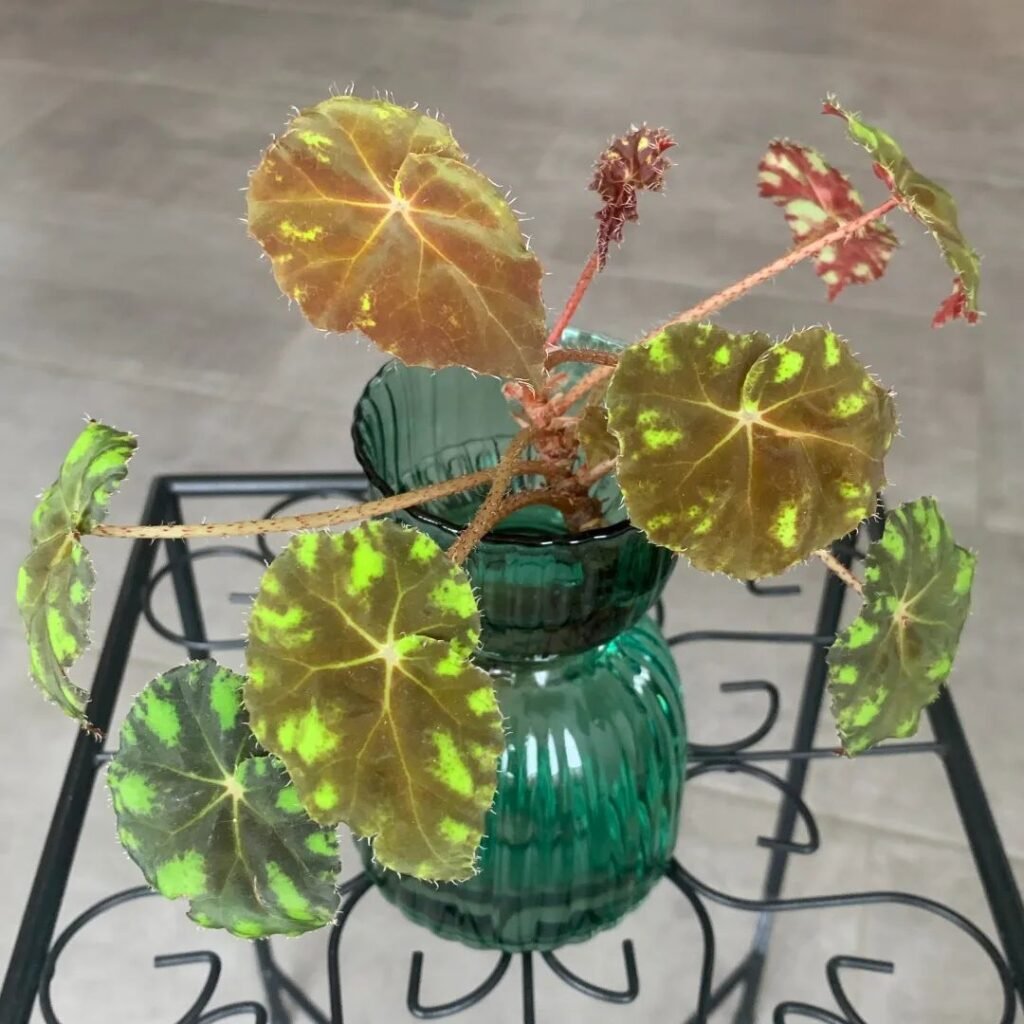
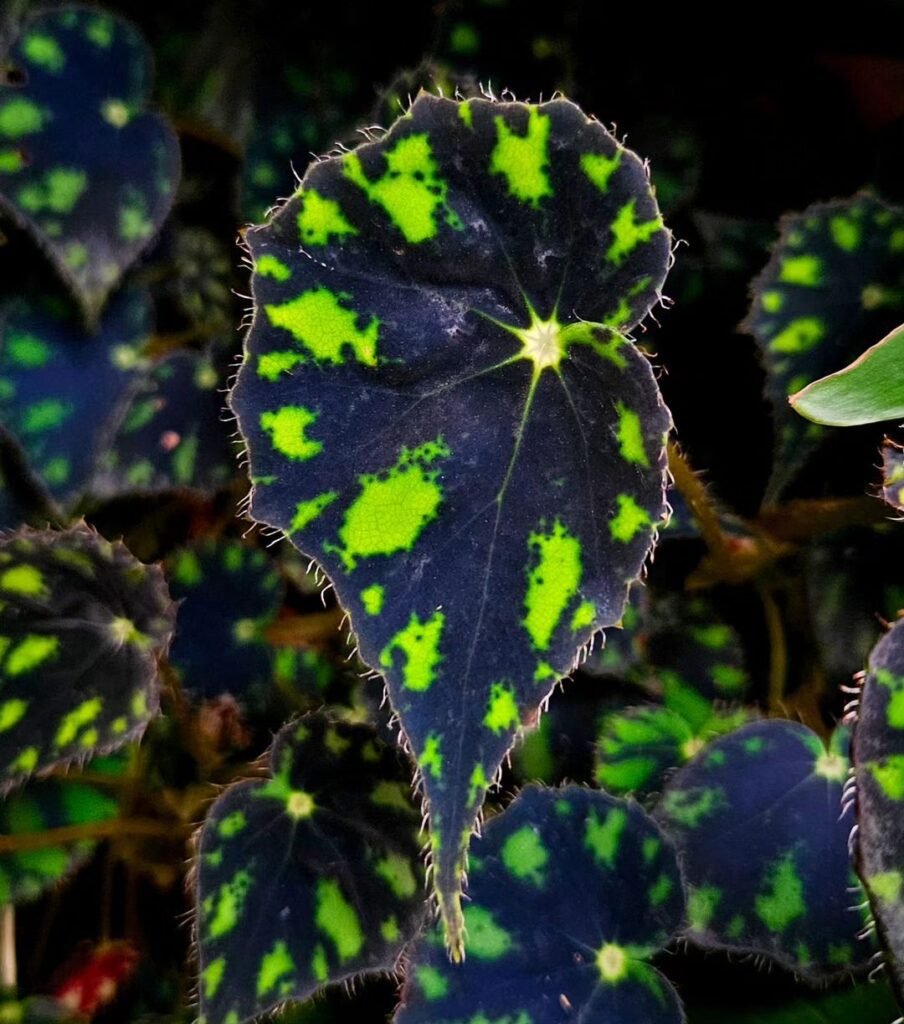
The Eyelash Begonia belongs to the Begoniaceae family and is classified under the Begonia genus. Its full scientific name is Begonia bowerae. Understanding the genus and species of a plant is crucial for providing the optimal care it needs.
Taxonomy Breakdown:
- Kingdom: Plantae
- Division: Magnoliophyta
- Class: Magnoliopsida
- Order: Cucurbitales
- Family: Begoniaceae
- Genus: Begonia
- Species: Bowerae
This classification helps plant enthusiasts and horticulturists delve deeper into the plant’s genetic makeup, aiding in the cultivation and care of the Eyelash Begonia. The unique characteristics of this begonia species are a result of its specific place in the plant taxonomy.
Eyelash Begonia Appearance
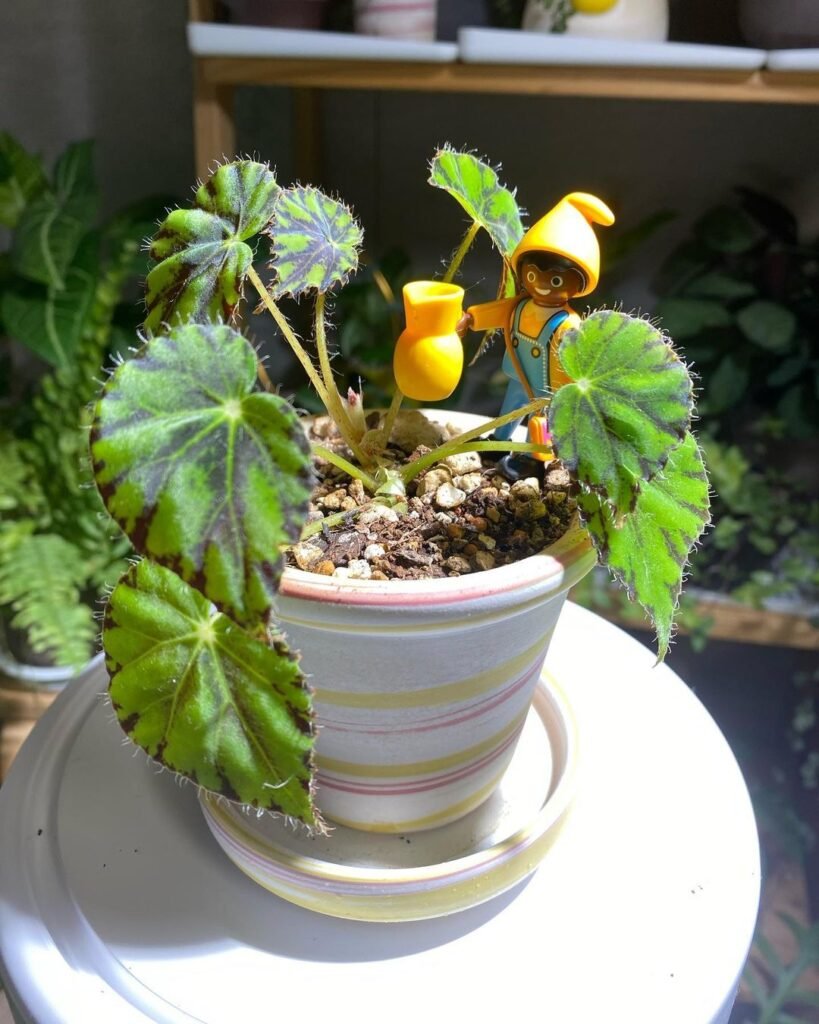
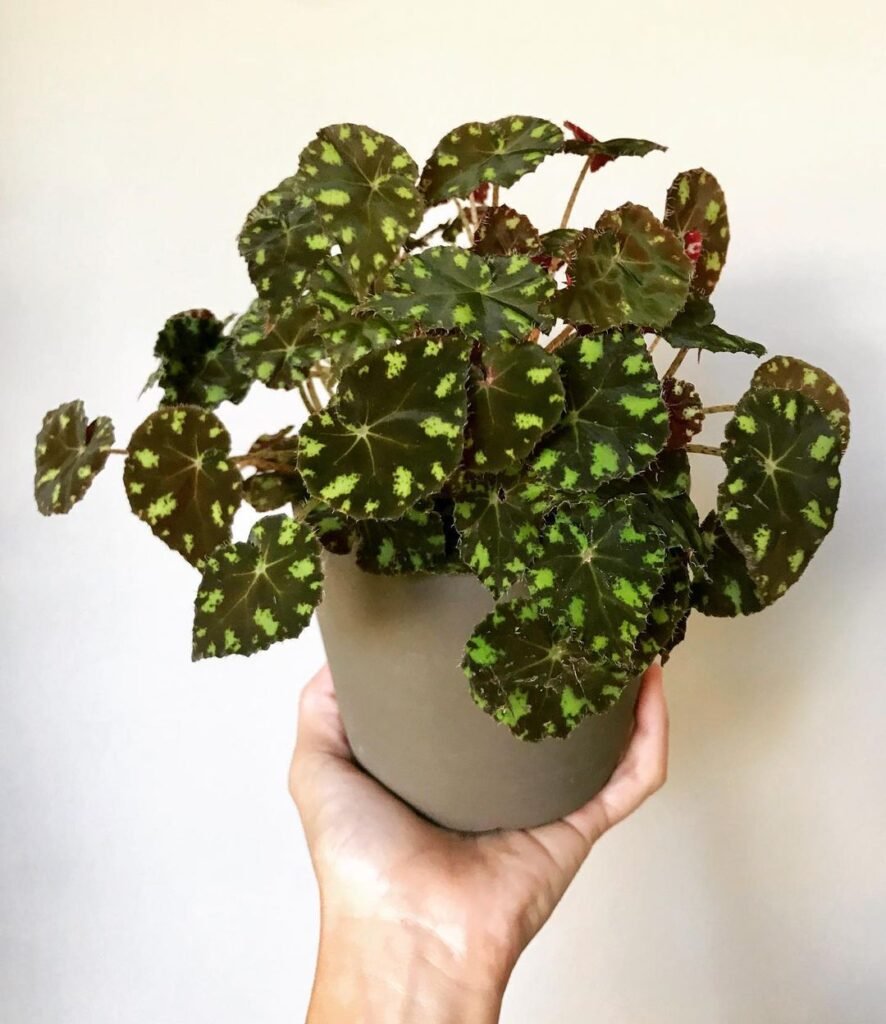
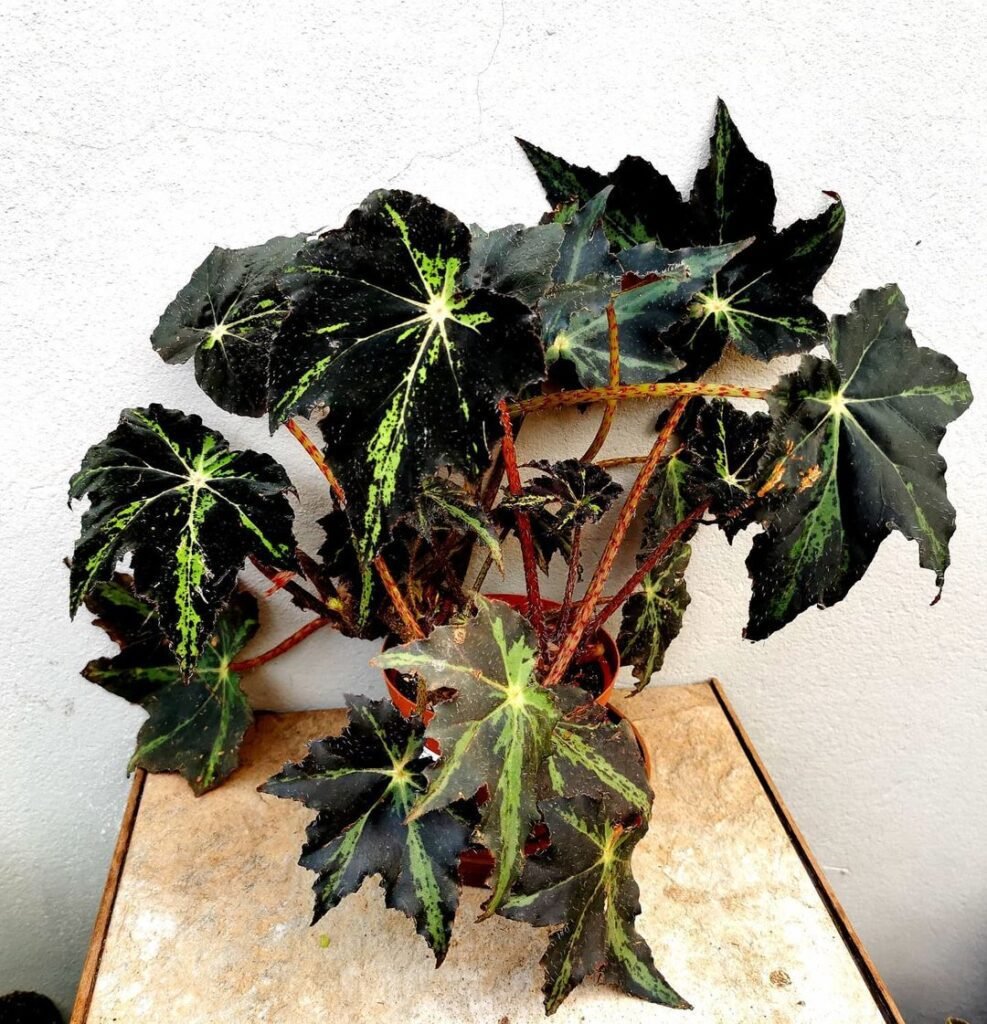
The visual appeal of the Eyelash Begonia is a major draw for plant lovers. Let’s take a closer look at its appearance and what makes it visually striking.
Leaf Structure and Texture:
The most prominent feature of Eyelash Begonia is its leaves. These large, circular to oblong leaves exhibit a vibrant green hue with patterns that add to their allure. What truly sets them apart, however, are the fine, hair-like fringes that resemble eyelashes, hence the plant’s common name.
Size and Growth Pattern:
Eyelash Begonia can reach a height and width of up to 12 inches. The thick, succulent stems contribute to its sturdy structure, and the plant tends to grow in a bush-like manner, creating a visually appealing cluster.
Variations in Coloration:
While green is the typical color of Eyelash Begonia, variations exist. Some plants may display lighter or darker shades of green, and the leaf patterns can vary, adding a touch of uniqueness to each specimen.
Texture and Touch:
Running your fingers over the leaves of Eyelash Begonia provides a tactile experience. The textured feel, combined with the fine fringes, makes it a pleasure to touch and adds an interactive element to caring for this captivating plant.
Not the plant for you? Check out my full list of 78 Types of Begonia!
Eyelash Begonia Care Tips
Taking care of Eyelash Begonia involves providing the right conditions for its growth and ensuring its unique needs are met. Here’s a quick overview along with a table of tips and tricks to keep your Eyelash Begonia thriving:
| Care Aspect | Tips and Tricks |
|---|---|
| Light Requirements | Place in bright, indirect light; avoid direct sunlight to prevent leaf burn. |
| Soil Type | Well-draining soil mix; add perlite for enhanced aeration. |
| Watering Frequency | Allow the top inch of soil to dry before watering; avoid waterlogged soil. |
| Humidity Levels | Maintain moderate to high humidity; mist the leaves regularly. |
| Temperature Range | Keep in a warm environment, ideally between 65°F to 75°F (18°C to 24°C). |
| Fertilization | Feed with a balanced liquid fertilizer every 2-4 weeks during the growing season. |
| Pruning and Shaping | Trim leggy stems to encourage bushier growth; remove dead or yellowing leaves. |
| Propagation Methods | Propagate through stem cuttings or by dividing the rhizomes. |
| Repotting Frequency | Repot every 1-2 years, or when the plant outgrows its current container. |
| Seasonal Considerations | Adjust care routines in winter; reduce watering and fertilization. |
These tips form a comprehensive guide to maintaining a healthy and vibrant Eyelash Begonia. Now, let’s delve into each aspect of care to ensure your plant thrives.
Eyelash Begonia Light and Soil Requirements
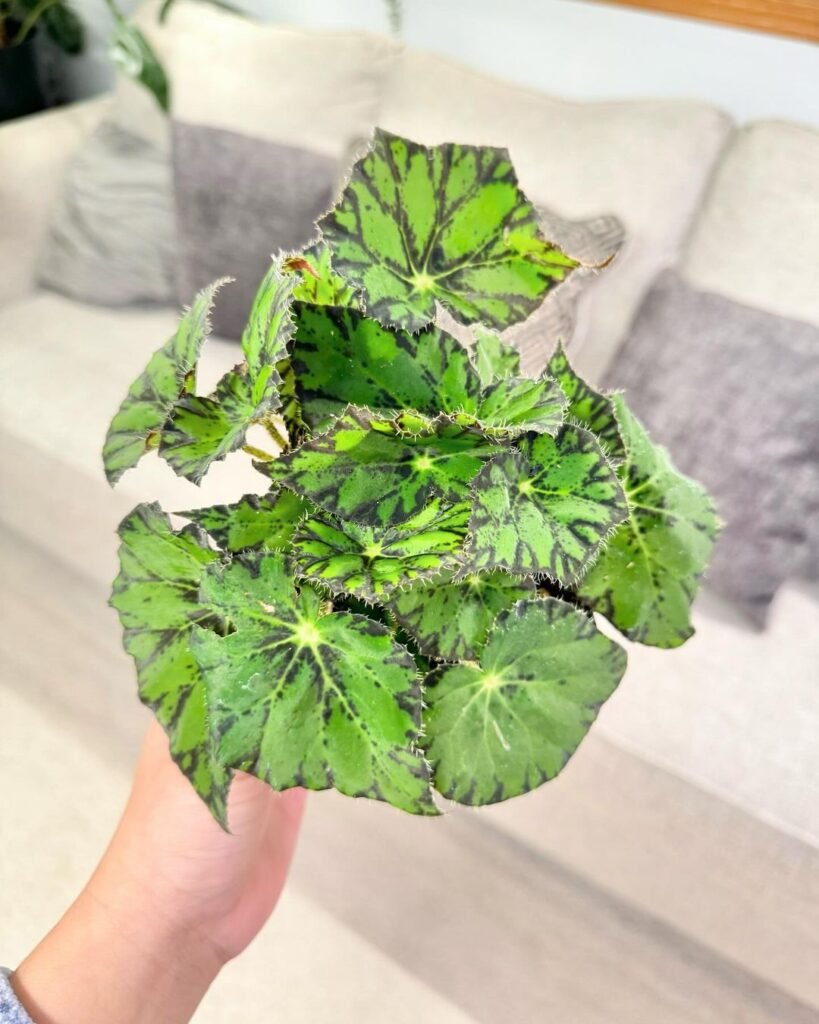
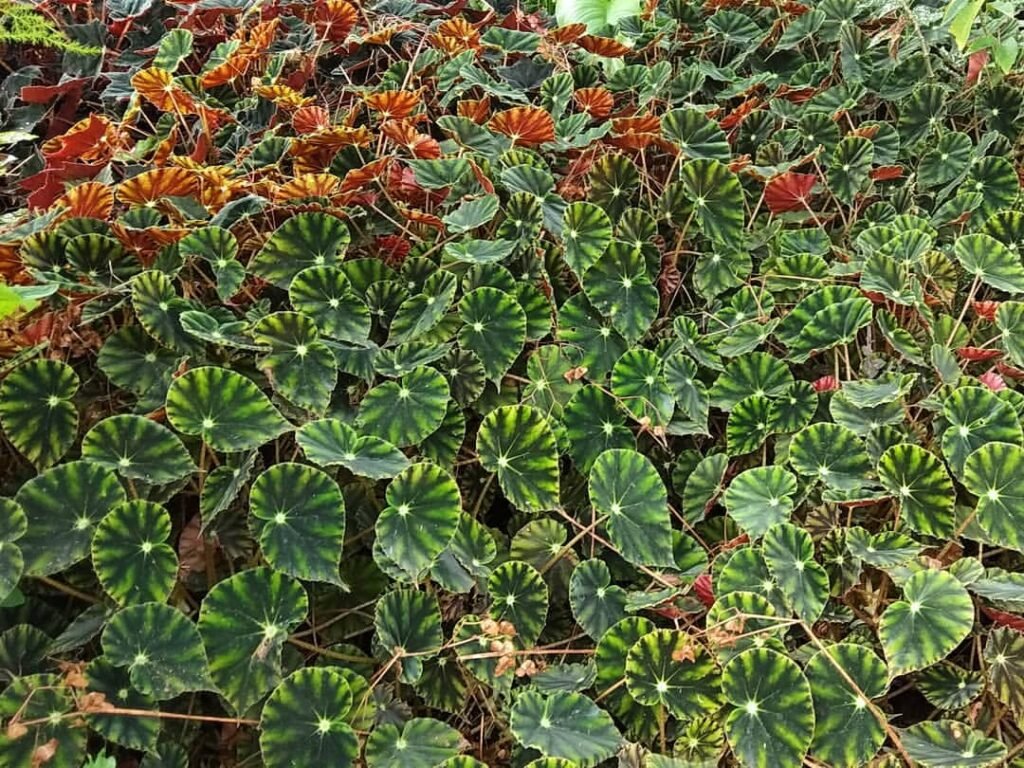
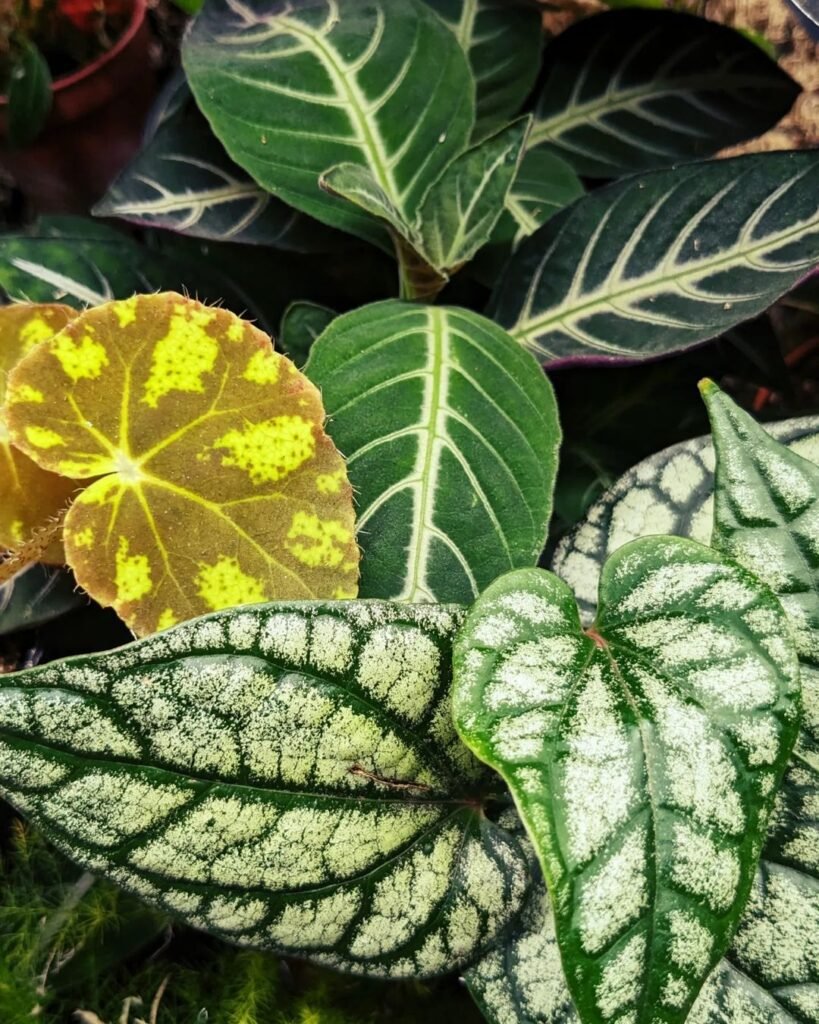
Light Requirements:
Eyelash Begonia thrives in bright, indirect light. While it enjoys ample illumination, direct sunlight should be avoided, as it can scorch the leaves. Consider placing your begonia near a north or east-facing window where it can receive filtered sunlight. If natural light is limited, fluorescent grow lights can be a suitable alternative.
Soil Type:
Choosing the right soil mix is crucial for Eyelash Begonia’s well-being. Opt for a well-draining mix to prevent waterlogging, which can lead to root rot. A mix of potting soil and perlite works well, enhancing aeration and ensuring the roots have the right balance of moisture.
Pot Selection:
Select a pot with drainage holes to facilitate proper water drainage. This prevents excess water from accumulating at the bottom of the pot, reducing the risk of overwatering. A shallow and wide container is ideal, allowing the plant’s rhizomatous roots to spread comfortably.
Watering Eyelash Begonia
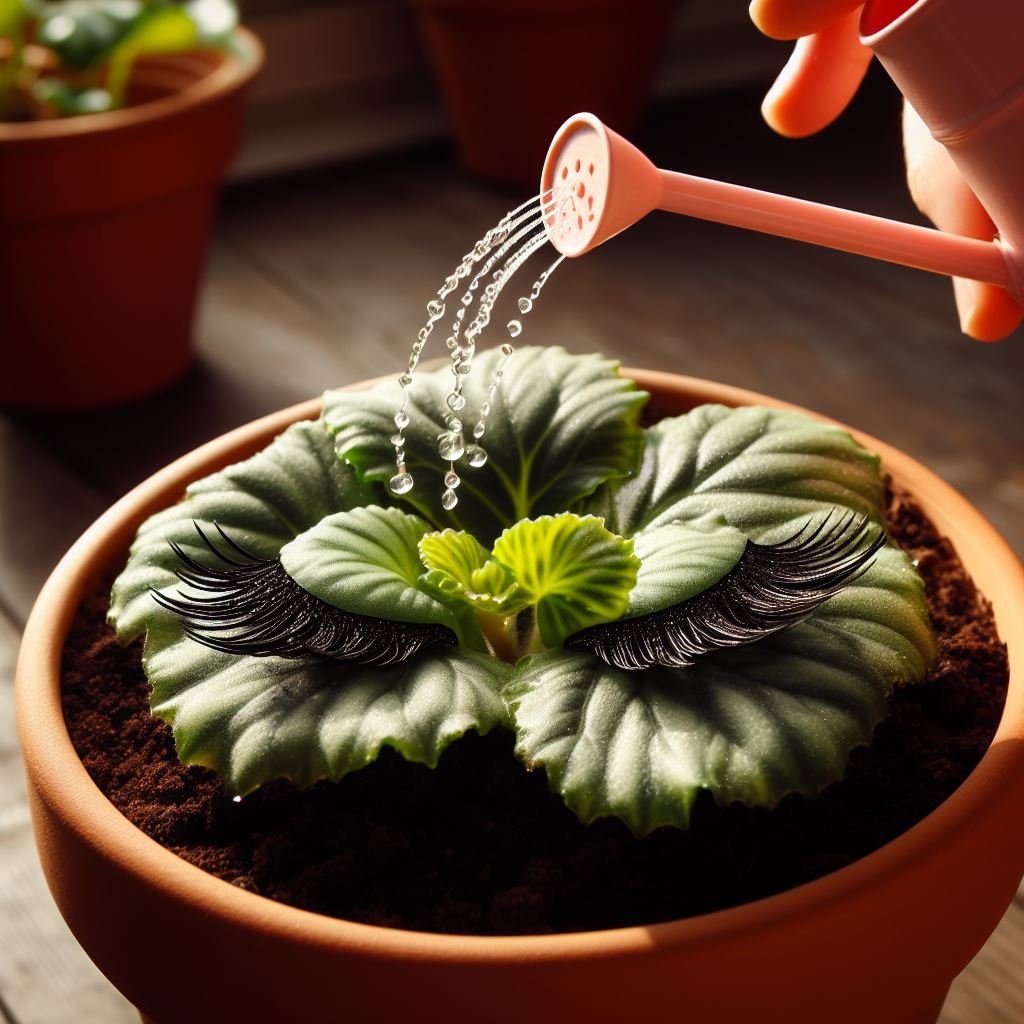
Watering is a critical aspect of Eyelash Begonia care, and finding the right balance is key to a thriving plant.
Watering Frequency:
Eyelash Begonia prefers slightly moist soil. Allow the top inch of the soil to dry out before watering again. Insert your finger into the soil; if it feels dry at the top, it’s time to water. Be cautious not to let the soil completely dry out or become waterlogged.
Watering Technique:
Use a gentle watering technique to avoid disturbing the soil and roots. Water the soil directly, keeping the leaves dry to prevent fungal issues. If possible, use room temperature water to avoid shocking the plant with cold water.
Signs of Overwatering or Underwatering:
Monitor your plant for signs of overwatering (yellowing leaves, wilting) or underwatering (drooping leaves, dry soil). Adjust your watering routine accordingly to maintain the right balance.
Eyelash Begonia Humidity and Temperature
Humidity Requirements:
Eyelash Begonia hails from regions with high humidity, making it important to replicate these conditions for optimal growth. Maintain a humidity level between 50% and 60%. If your indoor environment tends to be dry, especially during winter when heating systems are active, consider the following humidity-boosting techniques:
- Misting: Regularly mist the leaves with room temperature water to create a humid microenvironment around the plant.
- Humidifier: Use a humidifier to maintain consistent humidity levels, especially in the plant’s vicinity.
Temperature Range:
Eyelash Begonia thrives in a warm environment. Keep the temperature between 65°F to 75°F (18°C to 24°C). Avoid exposing the plant to sudden temperature drops or drafts, as this can lead to stress and negatively impact its overall health.
Fertilizing Eyelash Begonia
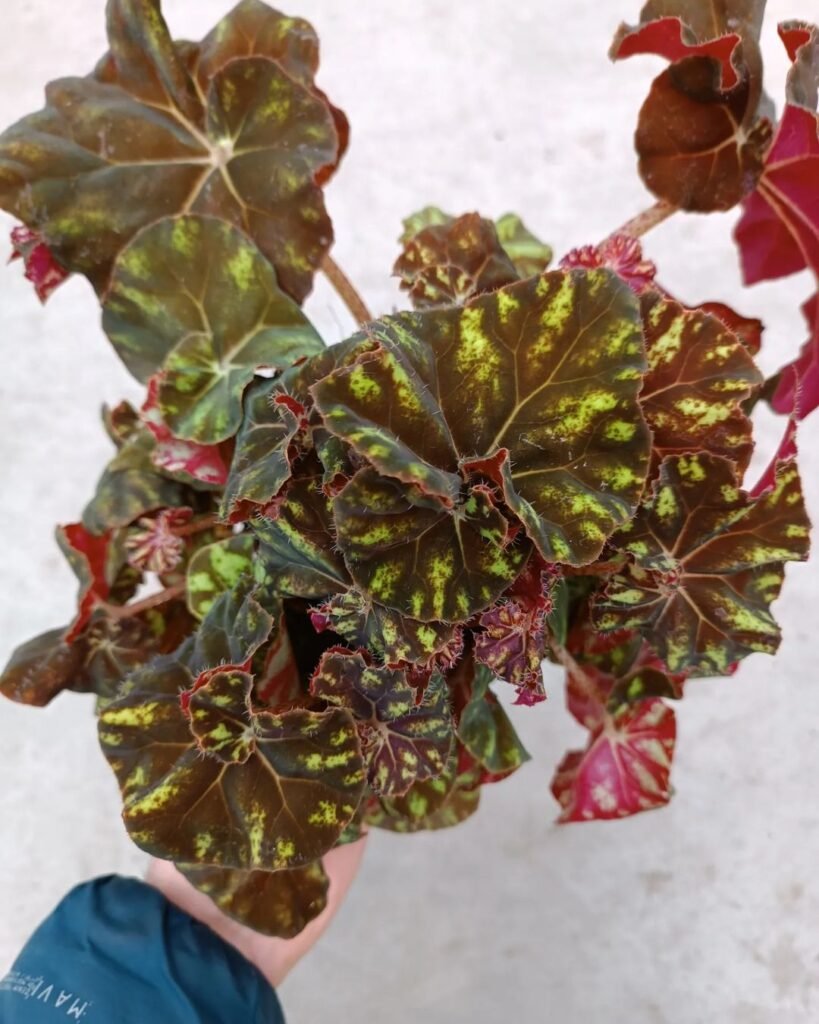
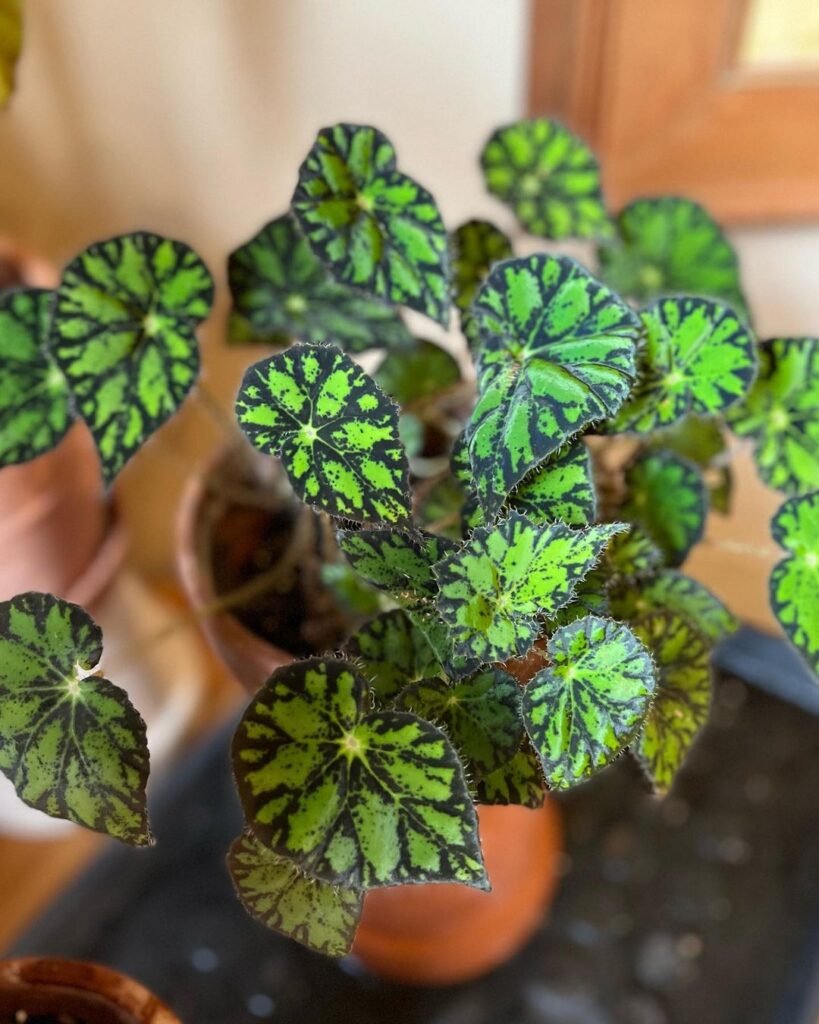
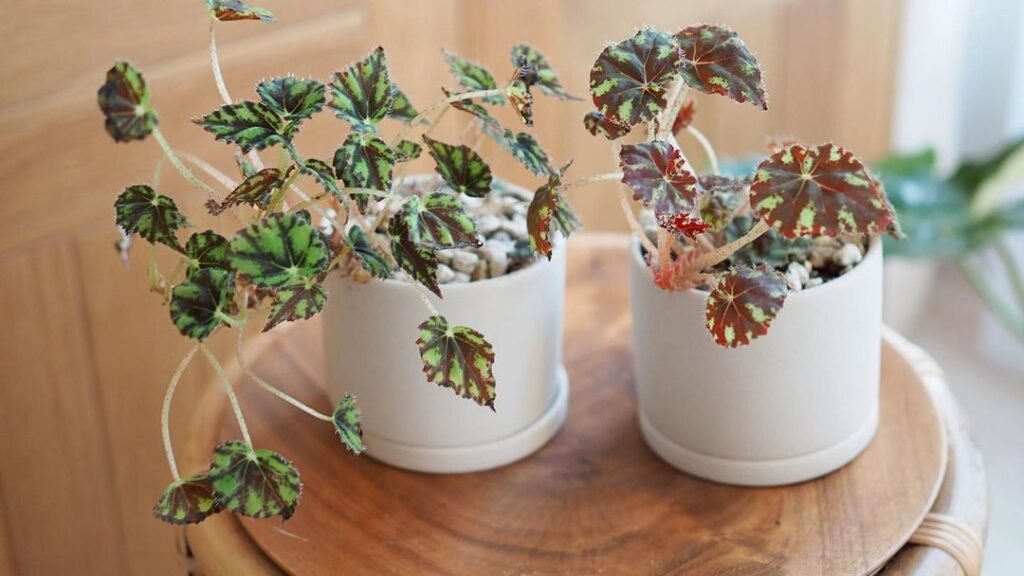
Choosing the Right Fertilizer:
Fertilizing is crucial to ensure your Eyelash Begonia receives the nutrients it needs for robust growth. Use a balanced liquid fertilizer with equal N-P-K (Nitrogen-Phosphorus-Potassium) ratios. Look for a formulation like 10-10-10 or 20-20-20.
Fertilizing Schedule:
During the growing season, typically spring and summer, feed your Eyelash Begonia every 2-4 weeks. Dilute the fertilizer to half or quarter strength to prevent over-fertilization, which can harm the plant. In fall and winter, reduce the frequency to once a month or every 6 weeks, as the plant’s growth slows down.
Application Tips:
- Apply to Damp Soil: Always fertilize damp soil to prevent root burn. Water the plant a day before applying fertilizer.
- Avoid Fertilizing Dry or Stressed Plants: If your plant is showing signs of stress, hold off on fertilizing until it recovers.
| Fertilizing Aspect | Tips and Tricks |
|---|---|
| Fertilizer Type | Use a balanced liquid fertilizer with equal N-P-K ratios, such as 10-10-10 or 20-20-20. |
| Frequency in Growing Season | Feed every 2-4 weeks with diluted fertilizer to promote healthy growth. |
| Frequency in Dormant Season | Reduce to once a month or every 6 weeks during fall and winter. |
| Application Technique | Apply to damp soil to avoid root burn; skip fertilizing stressed plants. |
Eyelash Begonia Pruning and Shaping
Encouraging Bushier Growth:
Pruning is a beneficial practice to shape and encourage bushier growth in your Eyelash Begonia. Here are some tips to guide you:
- Trim Leggy Stems: If you notice your begonia becoming leggy, trim the stems to promote branching and a fuller appearance.
- Remove Yellowing Leaves: Regularly remove yellowing or dead leaves to maintain the plant’s overall health.
Shaping Techniques:
Eyelash Begonia has a natural tendency to grow in a bush-like manner. Enhance its aesthetic appeal by shaping it appropriately:
- Pincering: Pinch the growing tips with your fingers to encourage branching and create a more compact and bushy shape.
- Selective Pruning: Target specific stems for pruning to achieve a balanced and visually pleasing arrangement.
Pruning Frequency:
Prune your Eyelash Begonia as needed throughout the growing season. Regular maintenance ensures the plant remains vigorous and retains its desired shape.
Eyelash Begonia Propagation and Repotting

Propagation Methods:
Propagating your Eyelash Begonia allows you to expand your plant collection or share its beauty with others. Here are two common propagation methods:
- Stem Cuttings:
- Choose a healthy stem with at least two leaves.
- Cut the stem below a leaf node using clean, sharp scissors or pruning shears.
- Remove lower leaves to leave a clean stem.
- Place the cutting in a container with moistened potting mix.
- Keep it in a warm, shaded area until roots develop.
- Division of Rhizomes:
- During repotting, gently divide the rhizomes, ensuring each division has roots attached.
- Plant the divisions in separate pots with fresh potting soil.
- Water them thoroughly and provide a conducive environment for root establishment.
When to Propagate:
Spring is the ideal time for propagation, as the plant is entering its active growth phase. However, with proper care, propagation can be successful at other times of the year.
Propagation Tips:
- Use Rooting Hormone: Applying a rooting hormone to the cut ends of stem cuttings can enhance root development.
- Maintain High Humidity: Create a humid environment around propagated cuttings to support root growth.
| Propagation Aspect | Tips and Tricks |
|---|---|
| Methods | Choose between stem cuttings or division of rhizomes based on preference. |
| Ideal Time | Spring is the best time for propagation, but it can be done throughout the year. |
| Additional Aids | Consider using rooting hormone and maintaining high humidity for success. |
Eyelash Begonia Seasonal Care
Adjusting Care in Winter:
As winter approaches, Eyelash Begonia experiences a period of dormancy, and its care requirements shift. Here’s how to cater to your plant during the colder months:
- Reduced Watering: Decrease the frequency of watering as the plant’s growth slows down. Allow the top layer of soil to dry out more between waterings.
- Limited Fertilization: Reduce or suspend fertilization during winter, resuming in spring when the plant resumes active growth.
- Lower Light Requirements: While still requiring bright, indirect light, Eyelash Begonia can tolerate slightly lower light levels during winter.
Monitoring for Pests:
Even during winter dormancy, it’s essential to keep an eye out for pests that may target your Eyelash Begonia. Common pests include aphids, spider mites, and mealybugs. Inspect the leaves regularly for signs of infestation, such as webbing or discoloration. If detected, treat promptly with natural or chemical remedies as needed.
Seasonal Tips:
- Protect from Drafts: Avoid placing your Eyelash Begonia near drafty windows or doors during winter to prevent temperature fluctuations.
- Increase Humidity: Supplemental humidity, through methods like misting or a humidifier, can be beneficial during the dry winter months.
| Seasonal Care Aspect | Tips and Tricks |
|---|---|
| Winter Watering | Decrease watering frequency; allow soil to dry out more between waterings. |
| Fertilization Adjustment | Reduce or suspend fertilization during winter, resume in spring. |
| Pest Monitoring | Regularly inspect leaves for pests; treat promptly if infestation is detected. |
| Environmental Protection | Avoid drafts and provide supplemental humidity during dry winter periods. |
Eyelash Begonia Companion Plants
Choosing Complementary Companions:
Eyelash Begonia can share its space harmoniously with other houseplants. Selecting suitable companion plants enhances the overall aesthetic and can provide a balanced microenvironment. Consider the following options:
- African Violet (Saintpaulia): With similar light and humidity preferences, African Violets complement the Eyelash Begonia’s visual appeal.
- Peperomia: The compact and diverse Peperomia species are well-suited for sharing space with Eyelash Begonia, especially in terrariums.
- Ferns: The lush, feathery fronds of ferns create a beautiful contrast with Eyelash Begonia’s textured leaves.
Companion Planting Tips:
- Consider Light and Watering Needs: Choose plants with similar light and watering requirements to simplify care routines.
- Vary Leaf Textures and Heights: Opt for companions with diverse leaf textures and heights to create an aesthetically pleasing arrangement.
| Companion Planting Aspect | Tips and Tricks |
|---|---|
| Plant Selection | Choose companions with similar light and watering needs for ease of care. |
| Visual Contrast | Vary leaf textures and heights for an aesthetically pleasing arrangement. |
If you’re thinking of extending your begonia plant family, read up on begonia solenia care and begonia rhizomatous care to help you decide on the next addition to your squad.
Pest Control Tips for Eyelash Begonia
Common Pests:
Eyelash Begonia, like many houseplants, can be susceptible to pests. Being proactive in pest control is essential for the plant’s well-being. Here are some common pests to watch out for:
- Aphids: These small, sap-sucking insects can cluster on the undersides of leaves.
- Spider Mites: Tiny arachnids that can create webbing on the plant, causing discoloration.
- Mealybugs: White, cotton-like insects that often hide in leaf axils and other protected areas.
Natural Pest Control Methods:
Preventing and treating pest infestations naturally is crucial for maintaining a healthy Eyelash Begonia. Here are some effective methods:
- Neem Oil: Dilute neem oil in water and spray on the leaves to deter pests.
- Insecticidal Soap: A solution of mild soap and water can be sprayed on affected areas to eliminate pests.
- Isopropyl Alcohol: Dabbing affected areas with a cotton swab dipped in isopropyl alcohol can help control pests.
Preventive Measures:
To prevent pests, regularly inspect your Eyelash Begonia’s leaves. If you spot any signs of infestation, isolate the plant to prevent the pests from spreading to other houseplants. Additionally, ensure proper air circulation and avoid overwatering, as these conditions discourage pest development.
| Pest Control Aspect | Tips and Tricks |
|---|---|
| Common Pests | Watch out for aphids, spider mites, and mealybugs as common pests. |
| Natural Methods | Utilize neem oil, insecticidal soap, and isopropyl alcohol for pest control. |
| Preventive Measures | Regularly inspect leaves, isolate affected plants, and maintain good airflow. |
Reviving a Sick or Wilting Eyelash Begonia
Identifying Issues:
A sick or wilting Eyelash Begonia can be distressing, but timely intervention can often revive the plant. Here’s how to identify and address common issues:
- Overwatering: If the soil is consistently damp and the leaves are yellowing, your plant may be receiving too much water.
- Underwatering: Wilting, drooping leaves that are dry to the touch may indicate insufficient watering.
- Poor Light Conditions: Yellowing leaves and leggy growth suggest inadequate light.
Recovery Strategies:
To revive a sick Eyelash Begonia, take the following steps:
- Adjust Watering: If overwatered, allow the soil to dry out before watering again. For underwatering, increase watering frequency.
- Evaluate Light: Move the plant to a location with suitable light conditions, avoiding direct sunlight.
- Trimming and Pruning: Trim yellow or damaged leaves and prune leggy stems to encourage new growth.
Consistency is key to revival. Once you’ve identified and addressed the issues, maintain a consistent care routine to allow the plant to recover gradually.
| Reviving Aspect | Tips and Tricks |
|---|---|
| Identifying Issues | Look for signs of overwatering, underwatering, or poor light conditions. |
| Recovery Strategies | Adjust watering, evaluate light, and trim/prune for a healthier appearance. |
| Consistency in Care | Maintain a consistent care routine to support the plant’s gradual recovery. |
Conclusion
Cultivating the Eyelash Begonia is a rewarding experience, and understanding its unique care requirements is key to a thriving plant. From providing the right light and soil conditions to implementing effective pest control and revival strategies, your efforts will be reflected in the vibrancy of this distinctive houseplant. Remember, each Eyelash Begonia is unique, and attentive care will result in a stunning and healthy addition to your indoor garden.
FAQs
How often should I water my Eyelash Begonia?
Water your Eyelash Begonia when the top inch of the soil feels dry. Adjust the frequency based on the specific conditions in your home, ensuring that you neither overwater nor underwater the plant.
Can Eyelash Begonia tolerate direct sunlight?
While Eyelash Begonia enjoys bright, indirect light, direct sunlight can lead to leaf burn. Place your plant near a north or east-facing window for optimal growth.
Is misting necessary for Eyelash Begonia?
Misting is beneficial, especially in dry environments or during winter when indoor heating reduces humidity. It helps create a humid microenvironment around the plant, mimicking its native habitat.
How do I propagate Eyelash Begonia through stem cuttings?
To propagate through stem cuttings, select a healthy stem, cut below a leaf node, remove lower leaves, and plant in moistened potting mix. Maintain a warm and shaded environment until roots develop.
What is the best time for repotting Eyelash Begonia?
The best time for repotting is spring or early summer when the plant is entering its active growth phase. Repot every 1-2 years or when the plant outgrows its current container.

Writer/Green Thumb/Explorer – Rooted deep in the rich soils of Devon, I’ve cultivated a vast expertise in plant care, helping greenery thrive in homes across the UK. When I’m not crafting detailed plant care guides, I’m journeying through the lush landscapes of the West Country, unearthing nature’s secrets and sharing them with fellow plant enthusiasts. Every leaf has a story, and I’m here to tell it.





